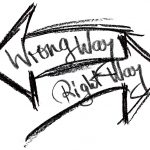A UNSW Canberra report says COVID-19 has accelerated the pace of changes that were already occurring pre-pandemic.
Lead author Associate Professor Sue Williamson said the extensive literature review revealed that employees would like to split their schedule between home and the office, and organisations are realising this.
“The future of work is, however, more than about working hybridly.
“It also encompasses other forms of working which are increasing in popularity. Activity-based working provides employees with options of working in settings that are created for specific activities, such as quiet work, collaborative and team work, creative work, and so on,” A/Prof. Williamson said.
“Remote working in hubs, where employees travel to a satellite office of their employer, are also growing in popularity.
“Now that we’ve seen that many employees can work in places other than their usual workplace, organisations are increasingly creating, and using remote working hubs.”
The research demonstrates that many employees – and their managers – believe they are more productive when working from home, with two to three days working remotely being the most popular option.
“Hybrid working will be different for different groups of employees,” A/Prof Williamson said.
“Research shows that employees in regional and remote areas are not as keen to work remotely as those in the city. Many younger workers also prefer to work in their usual workplace, so they have access to their teammates, and can engage in social learning.
“Unlike the pandemic lockdowns where large sections of the workforce worked from home, hybrid work will look rather different.”
However, there are some challenges ahead as remote working becomes the norm. A/Prof. Williamson said increased attention is being paid to the psychosocial aspects of remote working, particularly technostress. There is also a push for employees to have a right to disconnect from work, which becomes more challenging as boundaries between home and the office blur.
“Remote working also has gendered impacts, with women bearing the brunt of caring while working from home during the pandemic,” A/Prof. Williamson said.
“As we emerge into a Covid-normal world, women may continue to want to work from home to balance work and caring responsibilities. This can have negative impacts on women’s careers if they’re less present in their usual workplace.”
She said emerging research has identified a range of issues for organisations and managers to consider when implementing changes:
- Organisations need to consider their employee value proposition, as the research indicates that employees might change jobs if they are unable to work in a hybrid work environment.
- Organisations may face challenges associated with the differing impacts of the new ways of working on different groups of employees, for example, parents, regional employees, and employees with a disability, who benefit from working from home.
- Literature recommends that organisations review performance management processes and KPIs and actively move towards an outcomes-based performance management system.
- Longer-term strategies around the mix of ICT and face-to-face mechanisms to meet and conduct work require further consideration.
- Working from home and remote working policies may need to be reviewed.
Future of Work Literature Review: Emerging trends and issues was prepared for the Australian Tax Office and Department of Home Affairs. Co-authors include Alicia Pearce from the University of Technology Sydney and Professor Helen Dickinson, Vindhya Weeratunga and Fiona Bucknall from UNSW Canberra.
This article was originally published by UNSW Canberra and is republished here with the kind permission of the author.
What does the ‘new normal’ look like for your business?
Post a comment on First 5000 – Have your Say on LinkedIn today or email editor@first5000.com.au with your story.









